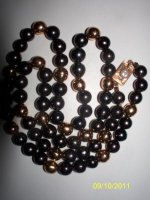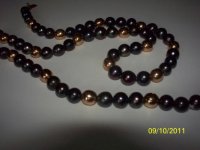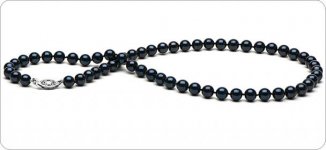daisybluetick
New Member
- Joined
- Sep 10, 2011
- Messages
- 4
Hi all, I have a question about black pearls. Just purchased a necklace that has black pearls and gold beads. The necklace is from an Egyptian jeweler. By my measurement, the pearls are about 6 mm. Some appear very round, others less so. They vary in color, several have a very strong reddish/copper luster, some green and some blue. A couple of them have chipped where they were drilled and there is layer upon layer of thick nacre. They were represented as being from the 1930s/1940s. I think they are more modern. I would appreciate any information because what I know about pearls is next to nothing. Thanks so much!!



